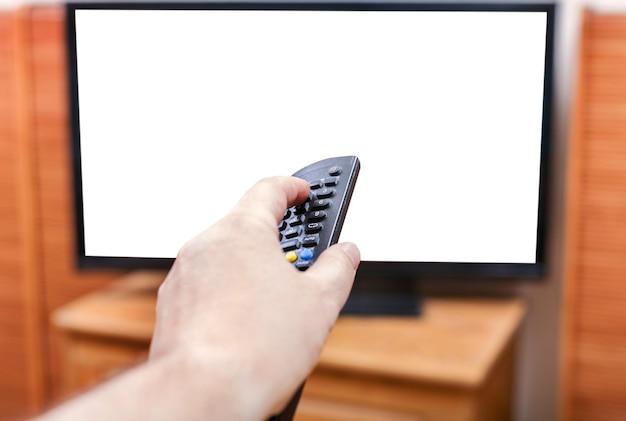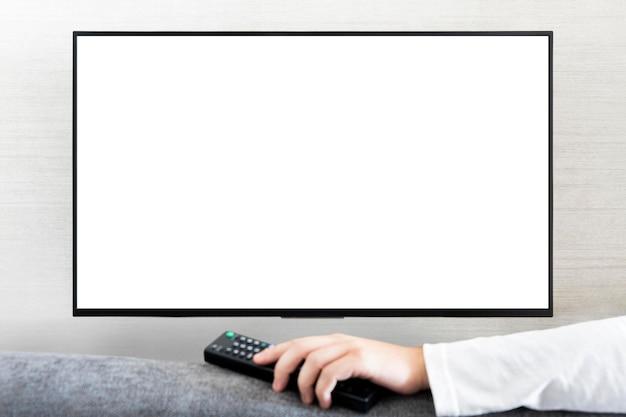Are you tired of watching your favorite TV shows with black bars on the sides or top and bottom of the screen? It can be frustrating when some of your TV channels are not displayed in full screen mode, leaving you wondering if there’s something wrong with your television or cable/satellite service. Don’t worry, you’re not alone in this predicament.
In this blog post, we’ll explore the common reasons why some TV channels may not appear in full screen on your television. We’ll also answer questions such as whether the Samsung 6 Series has picture-in-picture (PIP) functionality, what TVs have picture-in-picture capabilities, and if it’s possible to watch two channels at once. Additionally, we’ll provide solutions for adjusting your screen size to fit your TV properly, troubleshooting issues with split-screen on your TV or DirecTV, and understanding aspect ratio limitations.
So, if you’ve ever wondered why some of your TV channels are not filling up the entire screen, keep reading to find out the answers and solutions to enhance your viewing experience.
Why Are Some of My TV Channels Not Full Screen
Are you tired of squinting at your TV screen, wondering why some channels just won’t fill up the entire display? Well, fear not! We’re here to unravel this mystery and shed some light on why this frustrating phenomenon occurs.
The Aspect Ratio Conundrum
It all comes down to the fascinating world of aspect ratios. You see, different TV channels and broadcasts may have varying aspect ratios, which refers to the proportion of width to height. The most common aspect ratios are 16:9 (widescreen) and 4:3 (standard definition).
Not All Channels Are Created Equal
While most modern TVs are designed to automatically adjust the aspect ratio to fit the screen, some channels stubbornly stick to the old-school 4:3 ratio. It’s almost like they’re nostalgic for the days of tube TVs and bulky VCRs. These channels just don’t want to let go of their cozy, squared-off comfort zone.
Blame It on the Broadcasters
You might be wondering, who’s responsible for these non-full-screen shenanigans? Well, it’s often the broadcasters themselves. They have the power to decide how they want their content to be displayed. So, if they choose a 4:3 aspect ratio, you’re left with those black bars on the sides of the screen, like permanent residents who refuse to move out.
The Upside of Upscaling
Now, before you get too frustrated, let’s talk about upscaling. Your trusty television is equipped with a nifty feature that tries its best to stretch those 4:3 images to fit your widescreen display. It’s like giving the channels a gentle nudge, encouraging them to show their full potential. However, this upscaling process can sometimes result in slightly distorted or stretched images.
Lettersboxing – It’s Not as Fun as It Sounds
When a 4:3 channel meets your widescreen TV, one of two things can happen. Either the channel gets scaled up (as we discussed earlier), or you encounter a phenomenon called “letterboxing.” No, it doesn’t involve receiving mysterious letters in the mail. Instead, it refers to those black bars that appear on the top and bottom of the screen when a 4:3 channel is displayed on a widescreen TV without scaling.
Can You Take Matters Into Your Own Hands
If you’re tired of watching your favorite shows with black bars encroaching on your screen space, there is a glimmer of hope. Some TVs provide the option to manually adjust the aspect ratio, allowing you to fill the screen with the content of your choice. Just be aware that this may result in stretched or distorted images, so use this feature cautiously.
Patience, Grasshopper
In the ever-evolving world of television technology, change is inevitable. As broadcasters continue to modernize their equipment and shift to widescreen formats, the number of channels clinging to the 4:3 aspect ratio should gradually decrease. So, take a deep breath, relax, and remember that patience is key. One day, full-screen bliss shall be yours.
Now that we’ve unraveled the mystery of why some TV channels refuse to go full screen, you can watch your favorite shows with a better understanding of the forces at play. So, sit back, grab your popcorn, and enjoy the show, black bars and all!
FAQ: Why Are Some of My TV Channels Not Full Screen
Does the Samsung 6 Series Have PIP
The Samsung 6 Series TVs do not have Picture-in-Picture (PIP) functionality. PIP allows you to watch one program while keeping an eye on another in a smaller window. While this feature may not be available on the 6 Series, other Samsung models offer PIP. Keep reading to find out which ones!
What TV Has Picture-in-Picture
If you’re eager to embrace the multitasking wonder of Picture-in-Picture (PIP) on your television, fear not! There are plenty of TVs on the market with this fantastic feature. Samsung 7 Series TVs, for example, provide the convenience of PIP, allowing you to enjoy two programs simultaneously. It’s like having the best of both worlds on one screen!
Can I Watch Two Channels at Once
Yes, you can! With TVs that have Picture-in-Picture (PIP) capability, such as the Samsung 7 Series, you can watch two channels simultaneously. Whether you want to keep up with a live sports event while catching up on your favorite TV show or simply keep tabs on multiple programs, PIP lets you do just that. Now you won’t miss a moment of the action!
How Do I Make My Screen Fit My TV
Getting the perfect fit for your screen is essential for a top-notch viewing experience. To make your screen fit your TV, you can adjust the aspect ratio. Most modern televisions allow you to change the aspect ratio through the settings menu. Navigate to your TV’s settings, find the aspect ratio option, and select the setting that stretches or zooms in on the image to fill the entire screen. Say goodbye to annoying black bars!
Can I Split Screen on TV
Absolutely! Some TVs, such as Samsung 7 Series models, offer a split-screen feature, allowing you to divide the screen into multiple sections to watch different programs simultaneously. Whether it’s keeping up with two sporting events or following your favorite TV series alongside the latest news, the split-screen function provides the ultimate convenience for multitasking TV enthusiasts.
How Do I Fix the Screen Size on My DirecTV
If you’re experiencing screen size issues with your DirecTV service, don’t worry; fixing it is a breeze! Simply follow these steps:
- Grab your DirecTV remote control.
- Hit the “Menu” button.
- Navigate to “Settings.”
- Select “Display.”
- Choose “Screen Size Adjustment.”
- You’ll see various options to adjust the screen size. Play around with these until you find the perfect fit for your TV.
Enjoy your DirecTV programs in all their full-screen glory!
How Do I Get Rid of Split Screen on DirecTV
If you’re ready to bid farewell to the split-screen function on your DirecTV, follow these simple steps:
- Locate your DirecTV remote control.
- Press the “Exit” or “Back” button. This should exit the split-screen mode and return you to full-screen viewing.
- Alternatively, you can try pressing the “Swap” button to switch between the two split-screen channels until you find the “Single” option to return to full screen.
With split-screen no longer in your way, you can immerse yourself in one program at a time, without distractions.
Why Can’t I Change the Aspect Ratio on My TV
If you’re having trouble changing the aspect ratio on your TV, there could be a few reasons for this predicament. Here are some possible explanations:
- Compatibility: Certain TVs, particularly older models, may not support changing the aspect ratio. Refer to your TV’s user manual or manufacturer’s website to verify its capabilities.
- Input Source Restrictions: Some input sources, such as cable or satellite boxes, might restrict your ability to change the aspect ratio on your TV. In this case, adjustments may need to be made on the external device instead.
- Locked Settings: Check if any parental controls or other settings are locking the aspect ratio options. Adjust or disable those settings to regain control.
If none of these reasons apply, it’s best to consult your TV’s support or contact the manufacturer for further guidance.
Does the Samsung 7 Series Have PIP
Yes, it does! The Samsung 7 Series televisions come equipped with the highly sought-after Picture-in-Picture (PIP) feature. So, you can enjoy the luxury of watching two programs simultaneously on a single screen. It’s like having your own personal TV multitasking assistant!
Why Are Some of My TV Channels Not Full Screen
If you find that some of your TV channels are not displaying in full-screen mode, there could be a few contributing factors. Here are some possible reasons and solutions:
- Aspect Ratio Mismatch: Different TV channels and content may have varying aspect ratios. Adjust your TV’s aspect ratio settings to ensure the image fills the screen correctly.
- Zoom or Picture Mode Settings: Check if your TV has any zoom or picture mode settings applied. Experiment with different modes to find the one that provides a full-screen experience.
- Signal or Broadcast Issues: Sometimes, the channels themselves may not be transmitting in full-screen format. Contact your service provider if you suspect an issue with the broadcast signal.
By troubleshooting these potential causes, you can take a step closer to enjoying your favorite TV channels in glorious full-screen mode!
That wraps up our FAQ section on why some TV channels may not be displaying in full screen. We hope this comprehensive guide has helped answer your burning questions and provided valuable insights into PIP, aspect ratio adjustments, and split-screen capabilities. Happy TV viewing!

